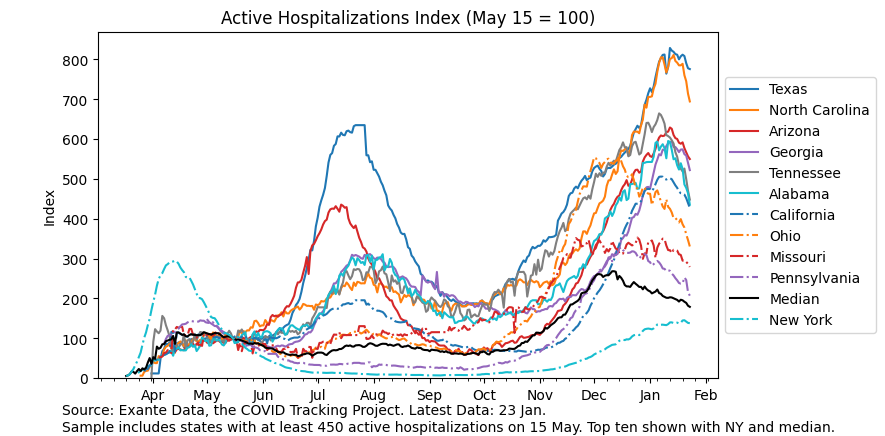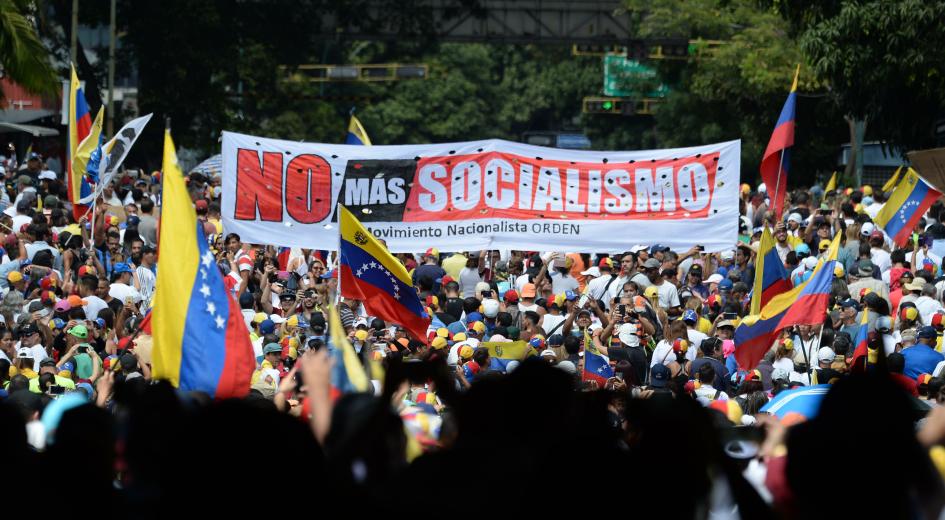Objection 1: It seems that Americans must wear masks because the president asks for it and because the president is exercising lawful authority in this request, and Americans must obey lawful authority.
Objection 2: It seems that masks act as a filter to prevent the transmission of COVID-19. Therefore, if everyone would have just obeyed and wore masks, the general transmission of COVID-19 would have been stopped, and the COVID-19 Pandemic would have been ended within a matter of weeks.
Objection 3: It seems that Americans must wear masks for the sake of the common good.
Objection 4: It seems Public Health is the common good that must be sought. Masks have an influence on the summaries that we use to measure public health. Therefore Americans must wear masks.
Objection 5: It seems that the risk of spreading COVID-19 to others must be avoided by wearing a mask. Avoiding this risk is a necessary form of charity toward others.
Objection 6: It seems that an intervention of Nation-wide mandates for managing the pandemic is legitimate because interventions on the State level have not been able to take care of the problem. Therefore Americans would need to wear masks if requested by a Nation-wide mandate.
Objection 7: It seems that Nation-wide mandates would be a kind of Socialist solution to address perceived threats to public health. It seems that a Socialist solution is necessary. Therefore Americans must wear masks as part of a Socialist programme for public health.
Objection 8: It seems that Commerce clause of the Constitution gives the Federal government has the authority to quarantine peoples. Masks are a method of quarantining peoples. Therefore the Federal government has the authority to quarantine all citizens through the use of masks. State governments also have authority to regulate commerce and to quarantine peoples. Therefore they also have the authority to mandate masks for all their citizens. It seems that the National Government should step in when State Governments are not doing a good job of quarantining their citizens.
On the Contrary: Americans live in the "land of the free."
I respond that America was founded on the principle of limited government. Furthermore, the principle in which a problem should be handled at the most local level wherever possible (the principle of Subsidiarity) is the "spirit" that animates and guides this most foundational American ideal of limited government, when it is expressed and fleshed out in many and varied ways in the United States Constitution and especially in the first 10 Amendments. The principle of Subsidiarity is directly opposed to Socialism because it is the literal opposite of the principle that guides the advancement of Socialism, namely that universal solutions to problems should be sought from the highest levels wherever possible. Furthermore, Socialism is not just an idea. It is a very big problem. The definitive Socialist dream is an efficient but unattainable utopia where every human need is provided for, even to the degree that money is no longer needed. A couple of very catastrophic examples of Socialism in the past century include the National Socialist Party of Germany (the NAZIS) and the United Soviet Socialist Republic (the USSR). A modern catastrophic example is the Socialist country of Venezuela, where the collapse of their currency was recently achieved but the crimes against humanity that are now occurring there are arguably just as unspeakable as the former examples. Of the modern Socialist regimes that now govern much of the developed world, many of them have established legalized abortion, which is practiced at a scale just as unspeakable as the above examples. The modern Socialist states are also trending toward legalized involuntary euthanasia, which conveniently helps to make the Socialist healthcare services more sustainable. No wonder that Papal encyclicals condemning National Socialism were read aloud from nearly every pulpit of the Catholic Church in the past century. Perhaps this teaching has been forgotten and it needs to be preached again. Don't get me wrong, the ideals of Socialism aren't all bad. But Socialism only works on the small scale, and only among saints living in religious orders. It is because of fallen human nature that Socialism will never work on the National level or in any secular government. History has shown that National Socialism tends toward a tyranny that destroys men. It cannot save man from himself and it must be opposed, especially by those who would defend the Constitution of the United States.
Reply to Objection 1: The President of the United States is a puppet. President Trump would have begged to differ, but there is a lawful sense in which the president of the United States is actually supposed to be a puppet. The executive branch, which he directs, is supposed to simply carry out and execute, not the will of those who have the power to control the reins of a political party, but the will of the people as it is most clearly expressed in the laws written by the legislative branch. When the president is executing the law, he is exercising lawful authority. But if he instead makes himself a puppet of the mainstream media and the technocracy, if he says what the media tells him to say and if he does what the technocracy tells him to do, he is not exercising lawful authority. Insofar as Biden is a puppet of the mainstream media and the technocracy when he asks for Americans to wear masks, he is not exercising lawful authority. A command of unlawful authority can and must be opposed, for the sake of the common good, which includes the good of democracy, practiced lawfully within a republic. An unlawful request that all Americans wear masks can and must be opposed.
Reply to Objection 2: A surgeon wears a mask to block droplets of blood from entering his orifices. virus is much much smaller and can easily pass through the spaces between the fibers of the mask material. This is true for all masks currently in use to slow the spread of COVID-19, including surgical masks, cloth masks, and also the N95 masks. The N95 masks do not filter out 5% of the airborne particles. Viruses fall within this category of particles. Therefore, masks themselves do not function as effective filters to prevent the transmission of COVID-19. However, when everybody wears masks, this changes the behavior of peoples, and the changes of behavior contribute toward a slower spread of COVID-19. The mask can also contribute mechanically, not as a filter, but as a wall that slows down and disperses any high-velocity puffs of air that may exit a person's mouth when coughing, sneezing, or speaking a word with the letter "p", thus dispersing any COVID-19 virus particles that may be present in the burst of air and making it less likely that others nearby will be exposed to the potentially higher-concentration of particles that would otherwise be trapped in the vortex that is formed when the high-velocity puff of air travels across a room. The clear-plastic face shields can also disperse air, especially if they are more of the wrap-around type, but they bring about less of a change in the behavior of peoples. They are still effective at slowing the transmission of COVID-19 through behavior modification insofar as they are a visual reminder to keep conversations short.
Reply to Objection 3: Masks have the effect of obscuring communication. Masks can slow the communication of disease, but they also obscure both verbal and nonverbal communication, and they are a kind of barrier to a fully human encounter. For example, when you see a masked stranger, how much harder is it to catch his attention and strike up a conversation? How much harder will it be to recognize the stranger the next time you see him? How much harder is it to become introduced or really get to know a masked stranger? How many times have you had to ask a person to repeat what they said, because it could not be understood from behind the mask? In these examples, masks are a limitation to both the freedom of speech and the freedom of assembly. Clear and effective communication is necessary for the common good. Freedom of assembly is also necessary for the common good. A common good is something that we create together, something that is more than just the sum of individual goods. The common good is more than the sum of the goods enjoyed by individuals because the common good is vulnerable to being lost when communion fails. The common good includes the good of democracy, defined as "rule by the people." Freedom of speech and freedom of assembly are necessary constitutional (First Amendment) rights for the sake of democracy because democracy fails when the exercise of these rights are not protected and promoted, when communion is broken and communication is restricted. The exercise of these rights of free speech and assembly is necessary for the existence of other common goods, as well. Masks are not "for" anything in common; masks rather have the effect of obstructing that which would be common. Because they obstruct that which would be common, they are not, strictly speaking, for the common good.
Reply to Objection 4: Masks can be used to preserve the good of public health. But public health is not a common good in the strict sense because public health can be regarded as no more than the sum of individual goods, namely the sum health status of all of the individuals under consideration, according to quantifiable measures, such as the count of active COVID-19 hospitalizations, or, in a more positive, straight-forward sense, the count of the number of people who are healthy and do not have COVID-19. If these quantifiable summary representations of public health can be improved by eliminating or removing the weakest members, then the idea of advancing public health by this means is not even a "good" for all, and it can never be a common good if it is contrary to the good of individuals. Public health should not be regarded as more important than actual common goods. Furthermore, when an overemphasis on public health causes personal goods to be reduced to quantifiable measures of health, it can be very dangerous. For example, Biden's chief doctor who advises him on his COVID-19 task-force thinks that his own life will not be worth living after 75 years, and for this reason he will not use life-preserving measures such as a flu vaccine after he is 75 years old. The idea that a life might not be worth living has been promulgated before. It has the potential for disastrous effects on a grand scale when such an idea is held by those influencing public policy, especially when combined with the totalitarian tendencies of National Socialism.
Reply to Objection 5: For a young person, the risk of death from COVID-19 is less than the risk of death from driving a car. Driving a car is a necessary risk that we take. Communicating without a mask is also necessary in many situations, for the sake of building up some common good. It does not matter what the risk is, people still have a right to communicate together and assemble together without a mask between them. They ought to use this right responsibly, of course, and people are free to withdraw or refrain from communicating fully, using prudence and charity. On the other hand, there are some situations where there is practically no risk of communicating COVID-19 to others. For example, someone who has had COVID-19 and recovered from it would only have a chance of catching it again, and further spreading it, if he himself has a compromised immune system. If COVID-19 causes a (temporary) weakening of the immune system, then this may need to be taken into account. But if his immune system is working properly, and his body responded with the production of the proper antibodies, T-cells, and whatever else it uses for immunity which yet remains a mystery, then he is not likely to catch COVID-19 again, and he is not likely to spread it to others. If someone is not likely to spread COVID-19 to others, he shouldn't have to wear a mask.
Reply to Objection 6: Interventions on the State level were actually quite effective at lengthening the curve, which is what they intended to do. There was much disinformation on this point. In order to understand what was intended by the interventions, imagine a chart where the x-axis is time and the y-axis is the number of COVID-19 hospitalizations. Draw a bell-curve on the chart that resembles a normal distribution. This represents what the curve would have looked like, without the interventions. Now stretch the curve to be much more wide, much less tall, but with the same area under the curve. The new curve represents the goal. The goal of the interventions was not to shorten the duration of the pandemic, but rather to lengthen the duration of the pandemic by slowing the spread of the virus as it ran its course through the population, therefore reducing the number of active hospitalizations due to the virus at any one time. The goal was to "flatten the curve" by "lengthening the curve." It seems that these interventions were taken on by the State because the State believed that it was fully responsible for making sure that the sick are cared for. I believe that the Catholic Church would beg to differ. The Catholic Church is the biggest provider of healthcare, not the State. The State should not consider itself the sole responsible provider of healthcare because when it does, it always proves itself unable to provide sufficiently, and unable to provide the necessary but unquantifiable dimension of Love, when healthcare is reduced to a bureaucracy. Furthermore, State-wide interventions were not wise because they caused hospitals in rural areas to close or reduce their staff when too few people were coming in. Nation-wide interventions would have the same unfortunate effect but on a larger scale. A much better approach to the pandemic would be to ask, or even require, for local communities to actively regulate and promulgate their own health guidelines, with a close eye on the number of severe cases and deaths in the local hospitals. It would be prudent if these local health guidelines asked for households with vulnerable members to follow certain guidelines, while the other households without vulnerable members could be more free to make their own risk assessment following the advice of the doctor of their choice, and proceed as they see fit. This will result in a better-managed, shorter curve, less quarantine time for families who must protect vulnerable persons, less of a timeframe in which vulnerable persons are at-risk while waiting for the virus to finish the course of the curve, less depression, less poverty, and less suicides. Therefore, a Socialist, Nation-wide solution is not necessary.
Reply to Objection 7: A universal mask mandate is Socialist because it presents a one-size-fits-all, universal, society-wide, top-down, solution. A Nation-wide Socialist solution is not necessary, as demonstrated above. A good American citizen is faithful to the Constitution and stands up for this "supreme law of the land," in opposition to any National mandates which are Socialist and unnecessary. Therefore all Americans do not need to wear masks.










No comments:
Post a Comment